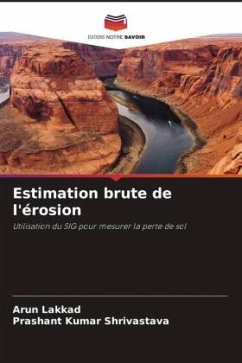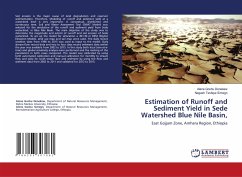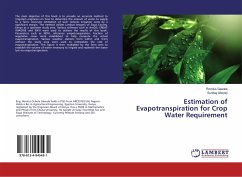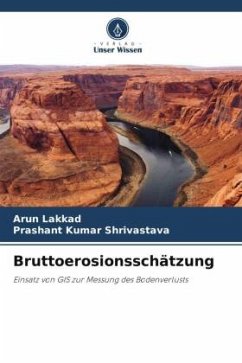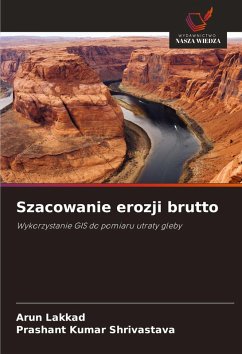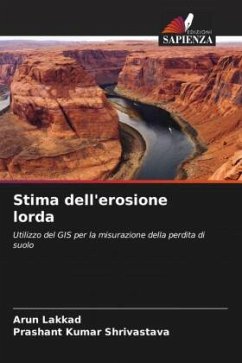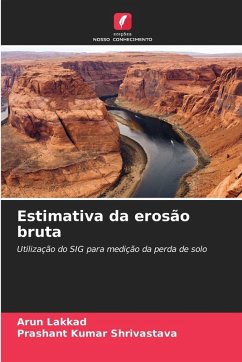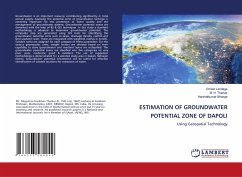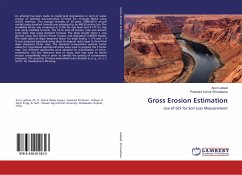
Gross Erosion Estimation
Use of GIS for Soil Loss Measurement
Versandkostenfrei!
Versandfertig in 6-10 Tagen
33,99 €
inkl. MwSt.

PAYBACK Punkte
17 °P sammeln!
An attempt has been made to model land degradation in term of water erosion of selected sub-watershed (7710.64 ha.) through RUSLE using ArcGIS interface. The average erosivity of 30 years (1986-2015) annual rainfall using standard formula was estimated to be 480.63 mt-ha./cm. The erodibility factor was computed as 0.236 for clay loam and 0.177 for clay soils using modified formula. The rill to inter-rill erosion ratio was derived from slope map using standard formula. The slope length factor L was derived using Unit Stream Power Erosion and Deposition (USPED) Model. The raster layers of slope ...
An attempt has been made to model land degradation in term of water erosion of selected sub-watershed (7710.64 ha.) through RUSLE using ArcGIS interface. The average erosivity of 30 years (1986-2015) annual rainfall using standard formula was estimated to be 480.63 mt-ha./cm. The erodibility factor was computed as 0.236 for clay loam and 0.177 for clay soils using modified formula. The rill to inter-rill erosion ratio was derived from slope map using standard formula. The slope length factor L was derived using Unit Stream Power Erosion and Deposition (USPED) Model. The raster layers of slope steepness factor for slope having 9 % was prepared separately using slope (in degree) raster layer to form final slope steepness factor map. The standard conservation practice factor values for cross-sloped agricultural lands were used to prepare the P factor map. Two different approaches were adopted for prioritization of micro-watersheds. Soil loss tolerance limit of study area was used toderive erosion susceptibility map in order to identify the priority of conservation programs. The priorities of micro-watersheds were decided as d, g, j k, e, f and h. for development Planning.



